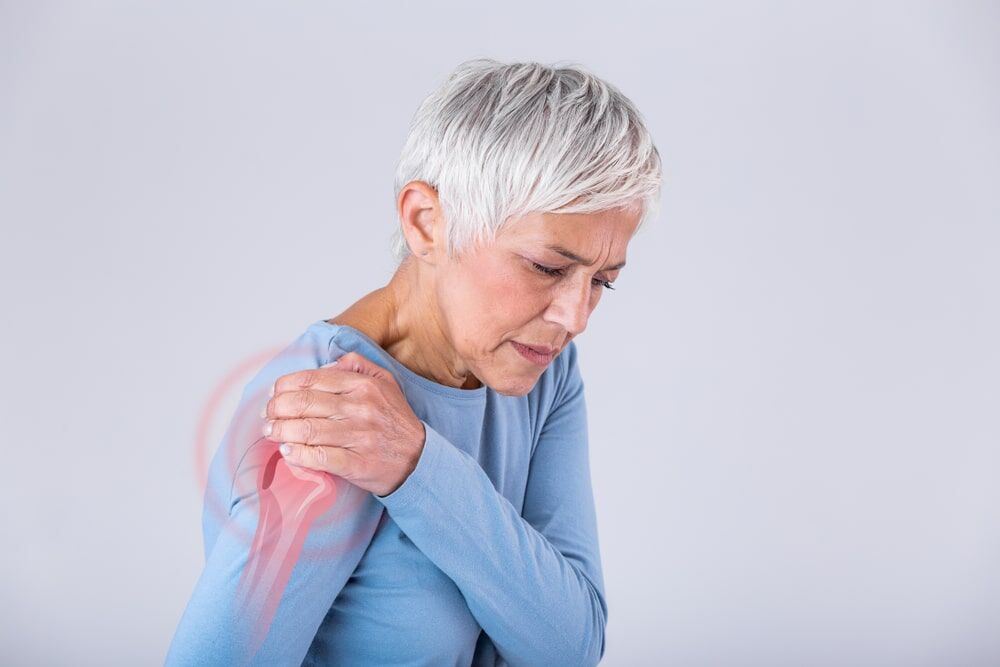Adhesive capsulitis is a painful condition that affects the shoulders. It causes stiffness, swelling and reduced range of motion in the shoulder joint.
If you experience pain in your hand, arm or shoulder, you may have adhesive capsulitis. The good news is that there are treatments available for this condition that can help reduce symptoms and get you back to doing the things you enjoy most.
The good news is that most patients who suffer from this disorder find relief through shoulder therapy treatments such as massage and stretching exercises; however, if these methods do not work, then there are other therapies such as dry needling (a form of acupuncture), cupping therapy and chiropractic adjustment (to realign joints).
To learn more about adhesive capsulitis, and what treatments are available, please continue reading below.
Understanding Adhesive Capsulitis
Adhesive capsulitis, or frozen shoulder syndrome, is marked by painful, gradual loss of both active and passive shoulder motion resulting from progressive fibrosis and ultimate contracture of the glenohumeral joint capsule.
What causes the adhesive capsulitis has not been fully understood, however, it might occur after significant trauma, for example, surgery or fracture, or without any specific reason (idiopathic adhesive capsulitis). Idiopathic capsulitis occurs most often between 40 and 60 years of age, affects the non-dominant shoulder and is more common in women than men.
The development of adhesive capsulitis has been associated with diabetes, thyroid disorders, and breast cancer treatment. It is more common in people with a sedentary rather than active lifestyle.
Adhesive capsulitis progresses through 4 stages. Recognising the stage of the progression of the disease is essential to applying the most appropriate treatment. This is done based upon a thorough assessment of your reported symptoms and a physical examination.
Stage 1 is characterised by a gradual onset of pain typically referred to as the deltoid muscle. Loss of external rotation and intact rotator cuff strength is a hallmark of adhesive capsulitis. Duration of symptoms is generally less than 3 months.
Stage 2 is characterised by persistent and more severe pain and motion restricted in flexion, abduction, internal and external rotation.
Stage 3 is the frozen stage, and the prominent complaint is significant motion stiffness.
Stage 4 is the chronic stage, pain is minimal and a gradual improvement can occur. The amount of improvement that can occur is controversial.
Specialised physiotherapists can help you to diagnose the stage of the disease, provide a customised rehabilitation program to relieve the pain in the first stages of the disease, and progress through regaining motion and strength as appropriate.
Rotator Cuff Vs. Frozen Shoulder: What’s The Difference?
To put it simply rotator cuff injuries consist of an injury to the cuff tendons around the shoulder, however with adhesive capsulitis or frozen shoulder mainly the joint capsule is involved.
With rotator cuff injuries, your arm movement may be limited when you try to move (active movement) but it can still be lifted manually with the other arm or with the assistance of a therapist (passive movement) depending on the level of pain present in your particular case.
While in both of these conditions you can experience shoulder pain, the prominent problem in the frozen shoulder is stiffness and lack of movement in the shoulder joint. In fact, both passive and active movements are affected in the frozen shoulder.
Physical Therapy In The Management Of Adhesive Capsulitis
Physiotherapy management of adhesive capsulitis depends on the stage of the problem when you visit a physiotherapist. In the first stages of frozen shoulder, it is often pain that is the main symptom.
At this stage, the aim of physiotherapy for frozen shoulder is to reduce pain and discomfort either by physiotherapy modalities, manual techniques or gentle exercises. However, in the next stages of the disease, the physiotherapist mainly works on improving the range of motion and strength of shoulder muscles.
What Is The Best Treatment For Adhesive Capsulitis?
The best treatment for adhesive capsulitis is specialised physiotherapy. The focus of physiotherapy for adhesive capsulitis is on relieving pain and restoring range of motion.
A physiotherapist may give you exercises such as pendulum exercises, active-assisted movements, and stretching of the posterior capsule. Once you gain the required range of motion, your physiotherapist may start to strengthen the muscles around the shoulder.
You may initially be recommended to take anti-inflammatory medication to assist with pain and inflammation, and additional treatments may be indicated depending on the severity of your condition and response to physiotherapy, these include a hydrodilation injection, or surgical intervention.
Your physiotherapist will discuss this with you and arrange a referral to an Orthopaedic Specialist if this is indicated.
Can Adhesive Capsulitis Be Fixed Without Surgery?
If you stick to your exercise protocol there is a high chance of regaining your usual level of activity. However, you need to be patient as the length of recovery could take several months to two to three years.
Your Orthopaedic Surgeon may consider surgical options with you if you have a resistant frozen shoulder that does not respond to conservative management.
Summary
At Melbourne Hand Therapy, we offer treatments for adhesive capsulitis through manual therapy techniques and exercises designed to restore flexibility and range of motion in your hand. We also provide education on how to prevent future issues so you can get back to living life without limitations from this painful condition!
Please call us at Melbourne Hand Therapy today (03) 9899 8490 or leave an enquiry and we will get back to you as soon as possible.

